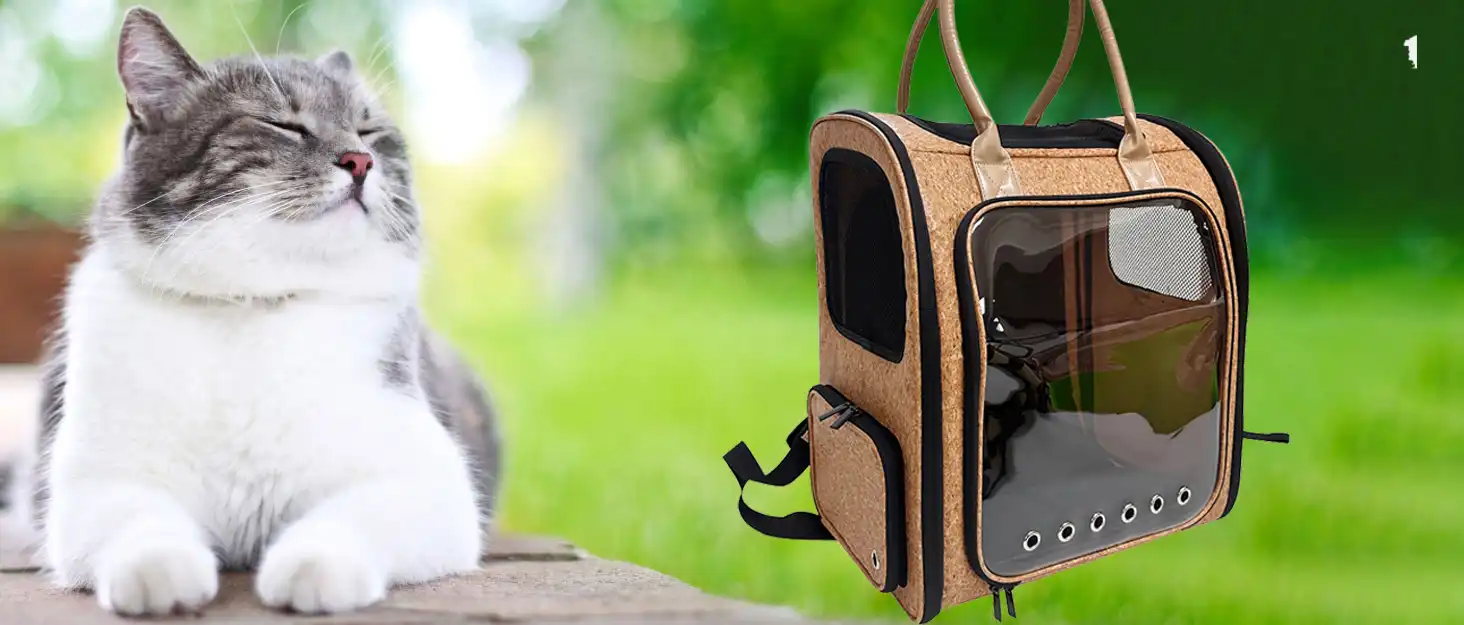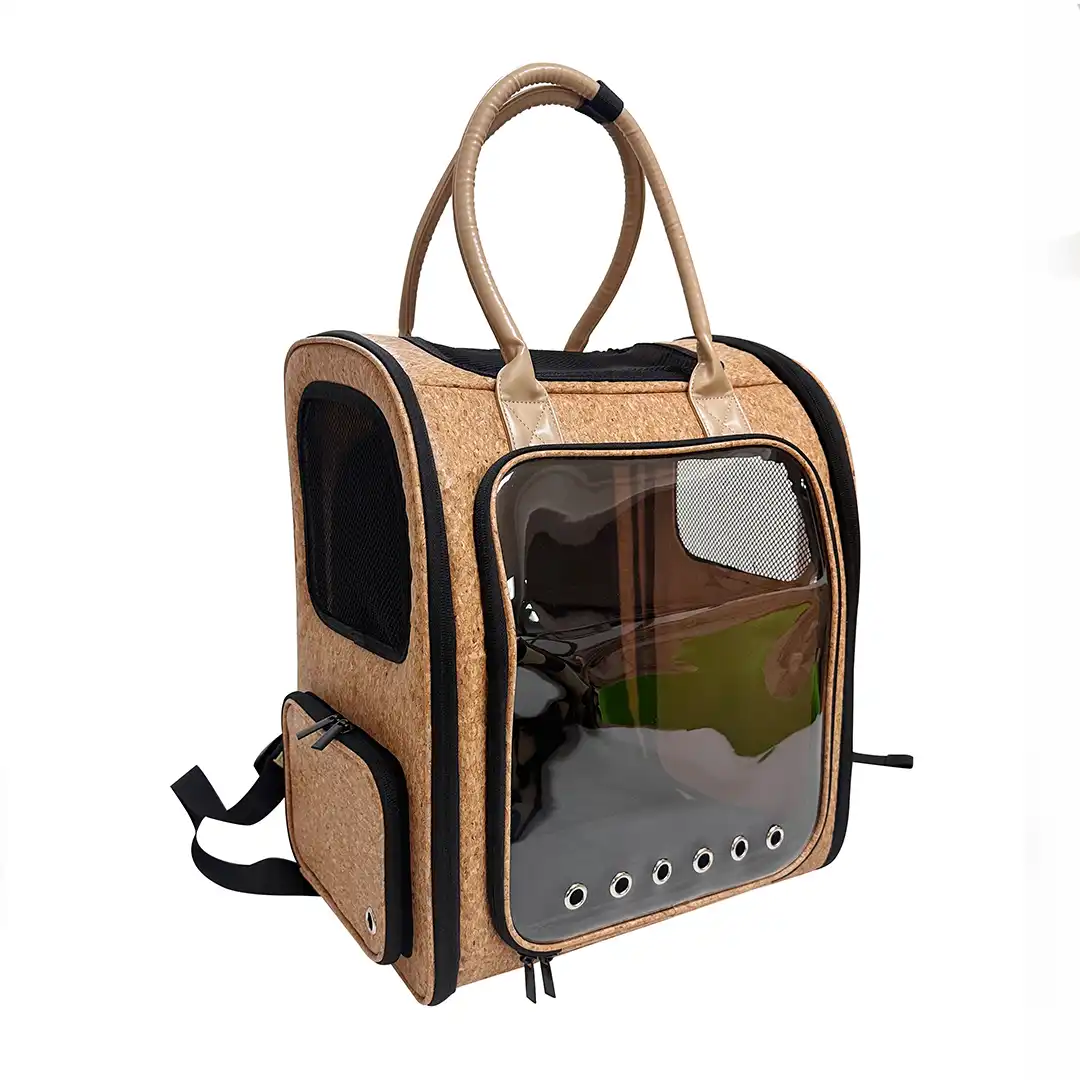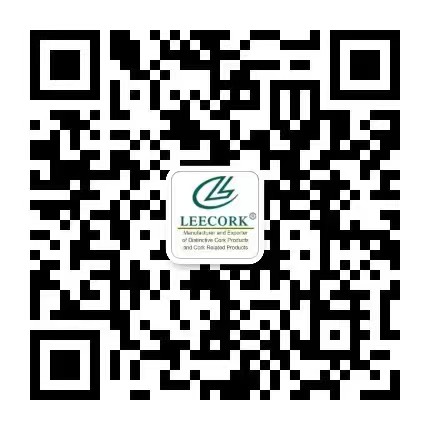Why Cork Backpacks Are the Future of Sustainable Fashion?
2025-07-28 15:25:43
In an era where sustainability is no longer a buzzword but a necessity, cork backpacks are emerging as the vanguard of eco-friendly fashion. These innovative accessories are not just a passing trend; they represent a significant shift towards more sustainable lifestyle choices. Cork, a renewable and biodegradable material, offers a unique combination of durability, style, and environmental consciousness that is revolutionizing the fashion industry. Unlike traditional materials, cork is harvested without harming the tree, making it an incredibly sustainable resource. The natural water-resistant and antimicrobial properties of cork also make these backpacks practical for everyday use, whether you're commuting to work or embarking on a weekend adventure. As consumers become increasingly aware of their environmental impact, cork backpacks offer a guilt-free alternative that doesn't compromise on functionality or aesthetic appeal. Their distinctive texture and appearance ensure that each bag is unique, appealing to those who value individuality in their fashion choices. By choosing a cork backpack, you're not just making a style statement; you're actively participating in a more sustainable future for fashion.

Cork vs. Leather: Eco-Friendly Material Showdown
When it comes to sustainable materials in the fashion industry, cork is rapidly gaining ground against traditional options like leather. This eco-friendly showdown reveals several compelling reasons why cork is emerging as the superior choice for environmentally conscious consumers.
Environmental Impact
Cork harvesting is an inherently sustainable process. The bark is carefully stripped from cork oak trees every 9-12 years without harming the tree, which can live for up to 300 years. This cyclical harvesting actually promotes forest health and biodiversity. In contrast, leather production often involves deforestation for cattle ranching and uses toxic chemicals in the tanning process, contributing to pollution and habitat loss.
Durability and Maintenance
Cork backpacks offer remarkable durability comparable to leather. The natural elasticity of cork allows it to resist wear and tear, maintaining its shape over time. Unlike leather, cork is naturally water-resistant and doesn't require special treatments or conditioners to maintain its appearance. This low-maintenance quality makes cork an ideal material for busy lifestyles, whether you're using it as a daily commuter bag or a travel cat backpack.
Animal Welfare
For those concerned about animal welfare, cork provides an ethical alternative to leather. No animals are harmed in the production of cork materials, making it a vegan-friendly option that aligns with cruelty-free fashion principles.
Versatility in Design
Cork's unique texture and natural variations offer designers a versatile medium to work with. From sleek, minimalist designs to more elaborate patterns, cork can be molded and dyed to create a wide range of styles. This versatility extends to functionality as well, with cork being suitable for various types of bags, including large cat backpacks that require both strength and flexibility.
Durability Test: Cork Backpacks Under Pressure
The durability of cork backpacks is often a point of curiosity for potential buyers. How does this natural material stand up to the rigors of daily use? Let's explore the resilience of cork through various durability tests and real-world scenarios.
Weight Bearing Capacity
Cork's cellular structure gives it remarkable strength-to-weight ratio. In tests, cork backpacks have shown impressive weight-bearing capacities, easily handling loads typical of daily use or travel. This makes them suitable for carrying laptops, books, and even as a large cat backpack for pet owners on the go.
Resistance to Wear and Tear
The natural elasticity of cork allows it to resist abrasions and punctures better than many synthetic materials. When subjected to repeated friction tests, cork backpacks show minimal signs of wear, maintaining their appearance and structural integrity over time.
Water Resistance
One of cork's most impressive qualities is its natural water resistance. Cork backpacks can repel light rain and spills, keeping your belongings dry. This feature is particularly beneficial for those using their bag as a travel cat backpack, where protection from unexpected weather is crucial.
Temperature and UV Resistance
Cork's natural properties allow it to withstand a wide range of temperatures without degradation. It also shows excellent resistance to UV rays, maintaining its color and structural integrity even with prolonged sun exposure – a valuable trait for outdoor enthusiasts.
Long-Term Performance
Users report that their cork backpacks maintain their shape and functionality even after years of regular use. This longevity not only speaks to the material's durability but also enhances its sustainability credentials, as longer-lasting products reduce the need for frequent replacements.

From Tree to Tote: The Cork Harvesting Process
The journey of a cork backpack begins in the serene cork oak forests of the Mediterranean, primarily in Portugal, Spain, and North Africa. Understanding this process highlights the sustainable nature of cork products and the craftsmanship involved in creating these eco-friendly accessories.
Sustainable Harvesting
Cork harvesting is a meticulous process that occurs every 9-12 years. Skilled harvesters, known as extractors, carefully remove the outer bark of the cork oak tree using specialized axes. This process doesn't harm the tree; instead, it promotes regeneration, allowing the tree to absorb more CO2 during the regrowth phase. A single cork oak can be harvested up to 20 times in its lifetime, spanning 200-300 years.
Processing and Transformation
After harvesting, the cork bark is left to air-dry for several months. This natural process stabilizes the material and enhances its properties. The cork is then boiled to increase flexibility and remove impurities. From here, it's sorted based on quality and thickness. For use in products like cork backpacks, the cork is ground into small granules and compressed into sheets or blocks.
Crafting the Backpack
Skilled artisans then take these cork sheets and transform them into durable, stylish backpacks. The material is cut, shaped, and often combined with other eco-friendly materials like organic cotton for linings or straps. The natural variations in cork's texture ensure that each backpack, whether it's a daily commuter bag or a specialized travel cat backpack, has its unique character.
Environmental Benefits
The cork harvesting process not only produces a sustainable material but also contributes to the preservation of cork oak forests. These ecosystems are vital habitats for numerous species and play a crucial role in preventing desertification in Mediterranean regions. By choosing products like cork backpacks, consumers directly support the maintenance of these important ecosystems.
Innovation and Future Prospects
As demand for sustainable materials grows, researchers and designers are continually finding new ways to utilize cork. From improving the material's properties to developing new applications, the future of cork in fashion and beyond looks promising. This innovation extends to specialized products like large cat backpacks, where cork's unique properties can be leveraged to create pet-friendly, durable, and eco-conscious accessories.
In conclusion, cork backpacks represent more than just a fashion statement; they embody a commitment to sustainable living and environmental stewardship. As we've explored, cork offers a unique combination of durability, style, and eco-friendliness that makes it an ideal material for the fashion-forward and environmentally conscious consumer. From its superior performance in durability tests to the sustainable harvesting process, cork proves itself as a material that can meet the demands of modern life while preserving our planet's resources.
At Xi'an Leecork Co., Ltd., we're proud to be at the forefront of this sustainable fashion revolution. Since 2002, we've been dedicated to crafting high-quality cork products that serve a global market. Our commitment to sustainability and innovation has made us a trusted supplier to hundreds of clients in over 50 countries, including industry pioneers in Germany, France, USA, Canada, UK, and many more.
We invite you to join the movement towards more sustainable fashion choices. Whether you're looking for a stylish everyday backpack, a durable travel cat backpack, or a spacious large cat backpack, our range of cork products offers the perfect blend of functionality, style, and eco-consciousness. Experience the unique benefits of cork for yourself and take a step towards a more sustainable future.
Ready to explore our collection of cork backpacks and other sustainable products? We'd love to hear from you. Contact us at info@leecork.com to learn more about our products or to place an order. Join us in shaping the future of sustainable fashion – one cork backpack at a time.

References
1. Silva, S. P., et al. (2005). Cork: properties, capabilities and applications. International Materials Reviews, 50(6), 345-365.
2. Pereira, H. (2007). Cork: Biology, Production and Uses. Elsevier Science.
3. Rives, J., et al. (2011). Environmental analysis of cork granulate production in Catalonia – Northern Spain. Resources, Conservation and Recycling, 58, 132-142.
4. Knapic, S., et al. (2014). Natural durability assessment of thermo-modified young wood of eucalyptus. Maderas. Ciencia y tecnología, 16(4), 499-512.
5. Mestre, A., & Gil, L. (2011). Cork for sustainable product design. Ciência & Tecnologia dos Materiais, 23(3-4), 52-63.
6. Costa, A., & Pereira, H. (2010). Influence of cutting direction of cork planks on the quality and porosity characteristics of natural cork stoppers. Forest Systems, 19(1), 51-60.
You May Like
0Related Industry Knowledge


